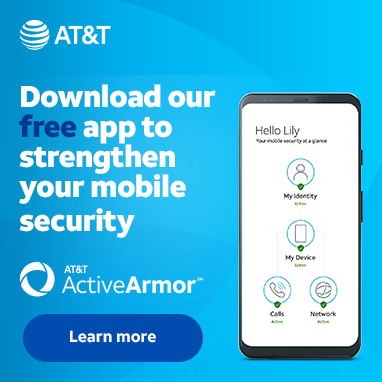
Tutor
•
6 Messages
In office service booster?
Wanted to see what could be done about little to no service in an office. I share an office with a co worker. We both have ATT and neither of us get service unless we step outside our door into the hallway where there are cubicles and other office chatter. Inconvenient when trying to make an important phone call.




Accepted Solution
Official Solution
pgrey
Master
•
3.5K Messages
7 years ago
Yeah, the newer spectrum (the 700-850-ish range) should, in theory, work better for this, give the wavelength. The problem is, these are all LTE frequencies for AT&T, so if you don't have VoLTE, then the band 12/17 won't help much with non-data functions, such as calls.
This is part of my ongoing contention regarding being able to use non-branded devices, as they say that phone calls are part of the "essential services" that are supported, however if you can't use an LTE frequency to make a call, well...
I use a booster for travel, but it should help with in-building use as well, particularly if you're able to "string" an antenna closer to an external wall/window. If you're getting some signal, just a weak one, then a booster can help; if you're getting no signal, ever, then it's unlikely, as the booster has to have at least some signal, to amplify it.
You can get a decent travel booster for about 2-300, but the inside-antenna range is pretty limited. The manufacturer will say it's a few feet, but IME, it's more like 6-12", maybe a bit more, depending, so your cell needs to be really close to the internal antenna side. Then there are the true "inside building boosters", which have a LOT more zip on the inside antenna side of things. I haven't tried one of these, but have read favorable reviews. I have to admit though, I kinda' scratch my head, and wonder, just how much RFI these are throwing off, given that the travel ones tend to say that the inside antenna must be at least 12" from people. Since I don't have one of the "inside models", I've admittedly avoided the tin foil discussion boards; I sort of don't want to know the answer, or maybe I want to know, but then want to be able to un-learn it ;-]
My travel booster works fantastically though, for travel in rural areas, since there's often a weak signal, particularly transitioning between towers, which the booster does a great job of turning into a "decent to great" signal, and the tower transitions become a non-issue. Even when moving through areas with decent signal, the booster makes it a great signal, and you can markedly tell the difference, in response and such (I tether a lot for this type of use, so it becomes really obvious), latency in particular is greatly reduced.
0
formerlyknownas
ACE - Sage
•
118.4K Messages
7 years ago
Does your office have wifi?
Do your phones and plan support wifi calling?
0
0
civicdrvr90
Tutor
•
6 Messages
7 years ago
We do have Wifi, however they do not allow us to tap into it. My only thoughts were a signal booster, but dang they are pricey.
0
0
formerlyknownas
ACE - Sage
•
118.4K Messages
7 years ago
Big buildings usually block signal. If they won't let you tap into wifi, your kinda stuck.
@pgrey knows about signal boosters, he may have a suggestion.
0
civicdrvr90
Tutor
•
6 Messages
7 years ago
Thank you for your experiences. Much appreciated! I've looked into those options. I guess I'm just going to have to try one.
0
pgrey
Master
•
3.5K Messages
7 years ago
@civicdrvr90Glad I could help, and thanks @lizdance40 for the handoff ;-]
I've had good luck with the SolidRF and Wilson stuff. The first is a better value, IMHO, but they had an inside antenna issue, which I actually helped them test/resolve, awhile back.
Once I sent them my test-matrix results, things happened fast, and new antennas were issued;-]
Since then, mine has worked like a champ, the 12" or so proximity being observed.
If you get a unit, make sure to test it, by causing interference, which should register as such. The easiest way to do this is to cross the two (inside/outside) antennas, in different orientations. It may take a couple of passes, but all frequencies should show interference.
I know, it's a tough decision, but I would say mine has paid for itself several times over now, in terms of availability.
It's REALLY important to make sure you have SOME signal first though; many have purchased, and expected these to provide them service, somewhere way out there, where no nearby towers exist (they can't work magic, basically, shocker ;-] ).
0